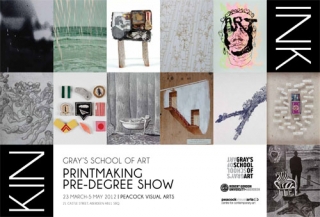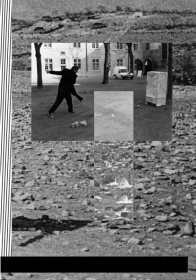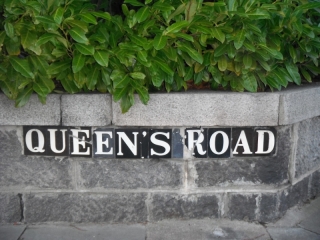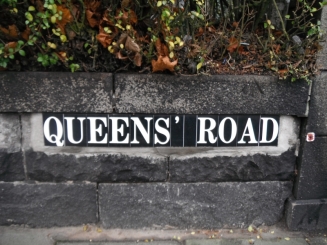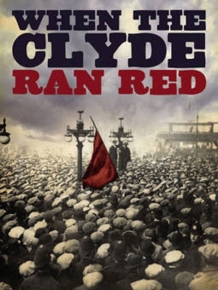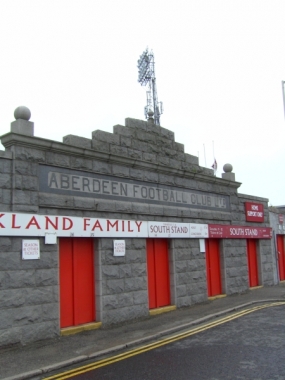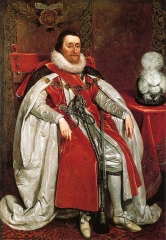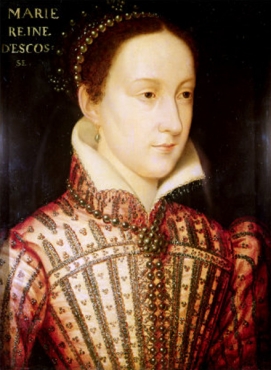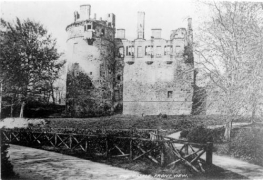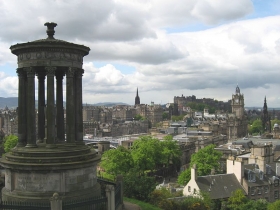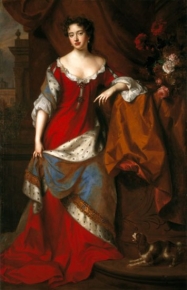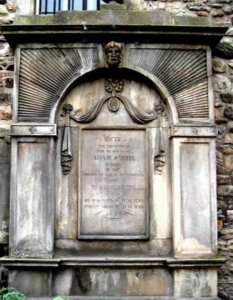With thanks to Kylie Roux.
THE OBSIDIAN ISLE – Gayle Chong Kwan
The Obsidian Isle is a significant new body of work from Venice Biennale exhibitor Gayle Chong Kwan. The installation of large-format photographs & sculptures documents a fictional island located off the west coast of Scotland, on which reside one country’s lost and destroyed buildings and places.
The Obsidian Isle explores ideas of collective history, national identity, landscape, and tourism through the prism of the senses and the distortion of memories.
Exhibitions runs 24 March – 5 May 2012
KIN – Gray’s pre-degree show
KIN is an exhibition by Gray’s School of Art’s BA Hons printmaking students.
The exhibition gives an exciting insight into a great variety of different approaches to print and printmaking and showcases a diverse range of works made in preparation for the students’ degree show later in the year. So come along to support the students and see the artistic talents of tomorrow.
Preview Night Friday 23 March | 6 – 8pm | all welcome!
Exhibitions runs 24 March – 5 May 2012
BIG JESSIE – Donald Urquhart
Drag queen turned draughtsman, Donald Urquhart presents Big Jessie, a selection of bold, new hand printed works in his distinctive cartoon-like black ink style, created at Peacock Visual Arts.
To be shown at The Brunswick Hotel, Merchant City, Glasgow.
.
Preview Thursday 26 April |Brutti Ma Buoni,
The Brunswick Hotel, Merchant City, Glasgow | 7pm – late
Exhibition runs 27 April – 27 May 2012
TEMPORARY ART SCHOOL – Poets in the City Workshop + Meet-up
The Temporary Art School is a one month live project happening throughout the city of Aberdeen in March 2012. TAS was devised by a group of people living and working in both Aberdeen and Glasgow who have come together to put on classes and workshops for all which experiment with what an art school can be and continue in a long tradition of self-organised education.
This Friday Poet Gerard Rochford will be giving a new workshop on the word whether it be spoken, written or sprawled in the streets. Please bring along a poem of two which you have written you would like someone to have a look at it and if you have never written one, in Gerard’s words ‘by the end you will have.’ email atemporaryartschool@gmail.com to reserve a space.
Friday 16 March | 5-9pm
ABERDUINO – Electronic Jiggery-pokery
Aberdeen’s own electronic tinkerers and artist’s hackerspace will be running on the second or third Tuesday of every month from now on – so put the date above in your digi-diary.
Come along if you’re interested in micro-controllers, soldering irons, circuit bending, electronic jiggery-pokery and chin scratching.
Tuesday 17 April | 6.30 – 8.30pm | FREE
*Note – The event is FREE but call us on 01224 639539 to let us know if you’re coming along.
RELIEF PRINTING WEEKEND WORKSHOP – Beginners
Come along to try out the oldest form of printmaking. No experience necessary.
Saturday 7 + Sunday 8 April | 10 – 4.30pm | £130/95 conc.
ETCHING WEEKEND WORKSHOP – Beginners
Learn the techniques and processes involved in the traditional art of etching. No experience necessary.
Saturday 21 + Sunday 22 April | 10 – 4.30pm | £130/95 conc.
GET ANIMATED AT PEACOCK
Ever wondered how Wallace and Gromit move? Well book onto our animation workshops to find out.
Throughout April, July, August & October | 10 – 4pm | age 10 + | £35
Call 01224 639539 for more information and to book a place on any of our courses.

